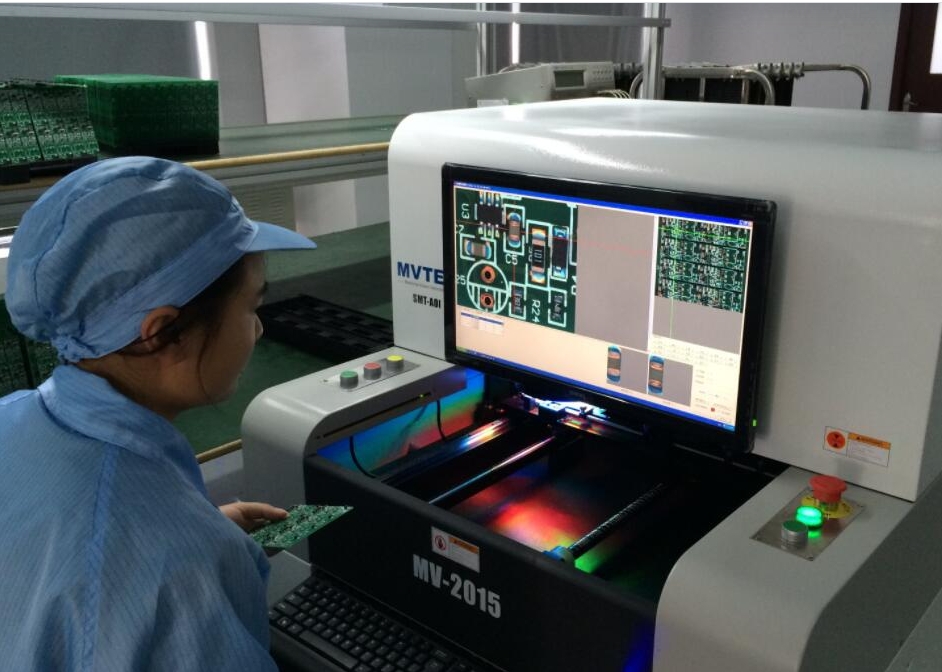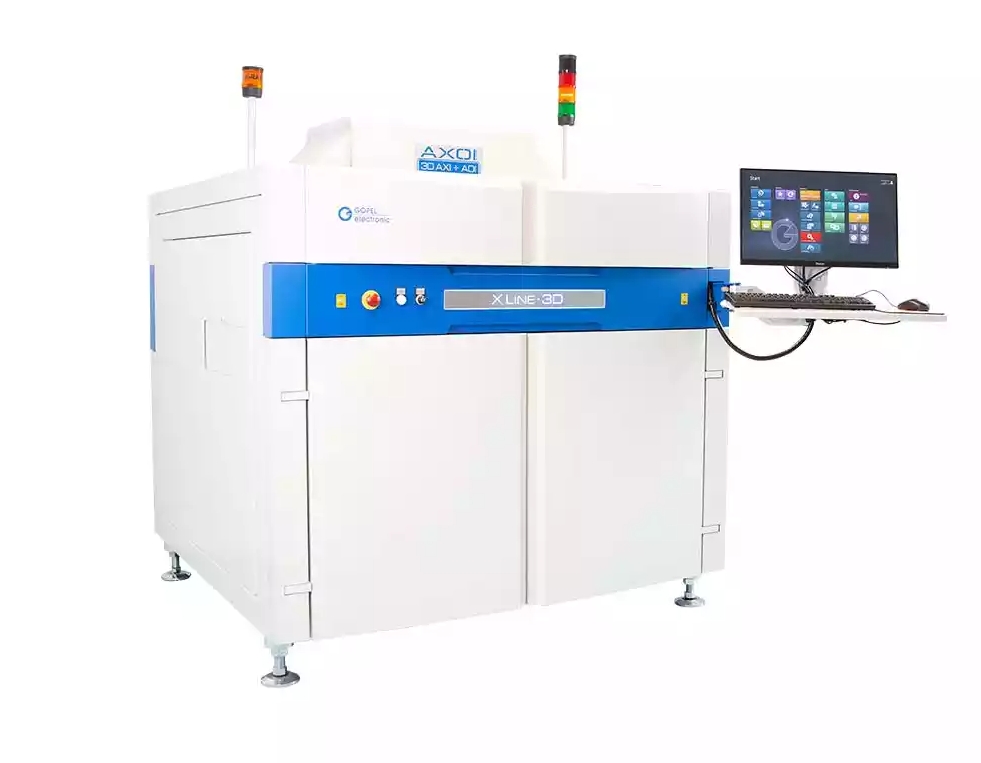If you're an electrical engineer working in surface mount technology (SMT) manufacturing, you're likely faced with the critical decision of choosing between Automated Optical Inspection (AOI) and Automated X-Ray Inspection (AXI) for quality control. So, which is better for your production line? In short, AOI is ideal for fast, cost-effective surface-level defect detection, while AXI excels at identifying hidden defects in complex assemblies, though at a higher cost and slower speed. In this detailed guide, we’ll dive deep into an AOI vs. AXI comparison, exploring their pros and cons, costs, defect detection capabilities, and suitability for SMT manufacturing. Let’s help you make an informed choice for your specific needs.
Introduction to Inspection in SMT Manufacturing
In SMT manufacturing, ensuring the quality of printed circuit board (PCB) assemblies is non-negotiable. Defects like misaligned components, poor solder joints, or missing parts can lead to costly failures down the line. Inspection technologies like AOI and AXI play a vital role in catching these issues early. But with different strengths and weaknesses, choosing between AOI and AXI—or even integrating both—requires a clear understanding of what each offers. This blog post will break down the AOI vs. AXI pros and cons, focusing on cost, defect detection, and practical applications in SMT environments. Whether you’re optimizing for speed, budget, or precision, we’ve got you covered.
What is Automated Optical Inspection (AOI)?
AOI uses high-resolution cameras and advanced image processing software to visually inspect PCBs for defects. It’s a non-contact method that scans the surface of a board to detect issues like component misalignment, incorrect polarity, missing components, and solder defects such as insufficient or excessive solder.
In a typical SMT line, AOI systems are placed after the reflow soldering process to catch defects early. They can inspect hundreds of boards per hour, making them a go-to for high-volume production. For example, a mid-range AOI system might process up to 150 cm2 per second with a resolution of 10 microns, ensuring even tiny defects are spotted.
Key Features of AOI
- Speed: Inspects boards in seconds, ideal for high-throughput lines.
- Cost-Effectiveness: Lower initial and operational costs compared to AXI.
- Surface-Level Detection: Excels at identifying visible defects on the PCB surface.

What is Automated X-Ray Inspection (AXI)?
AXI, on the other hand, uses X-ray imaging to penetrate the PCB and inspect internal structures. This technology is essential for detecting hidden defects, such as voids in solder joints under ball grid arrays (BGAs), flip chips, or other components where solder connections are not visible from the surface. AXI can also identify issues like cracked components or misaligned internal layers in multilayer boards.
AXI systems are typically slower than AOI, often taking several minutes per board depending on the complexity. However, their ability to see through components makes them indispensable for high-density or high-reliability assemblies, such as those used in aerospace or medical devices.
Key Features of AXI
- Internal Inspection: Detects hidden defects in solder joints and internal layers.
- High Precision: Critical for complex assemblies with BGAs or chip-scale packages.
- Slower Speed: Takes longer per board compared to AOI due to detailed imaging.

AOI vs. AXI Comparison: Breaking Down the Differences
Let’s dive into a head-to-head AOI vs. AXI comparison across key factors that matter most to electrical engineers in SMT manufacturing: defect detection, cost, speed, and application suitability.
1. Defect Detection Capabilities (AOI vs. AXI Defect Detection)
AOI: AOI is excellent for surface-level defects. It can spot issues like tombstoning (where a component stands on end), skewed components, or insufficient solder on visible joints with high accuracy—often above 95% for modern systems. However, it cannot see beneath components or inside solder joints, so defects like BGA voids or hidden cracks go undetected.
AXI: AXI shines where AOI falls short. It can detect internal defects, such as voids in BGA solder balls (which can cause up to 30% of failures in high-density boards if undetected) or misaligned pins under components. AXI achieves detection rates of over 98% for hidden defects, making it critical for complex assemblies. However, it may miss subtle surface defects that AOI catches easily.
Takeaway: Use AOI for quick surface checks and AXI for in-depth internal inspections, especially if your boards include BGAs or other hidden connections.
2. Cost Analysis (AOI vs. AXI Cost)
AOI: AOI systems are generally more affordable. Entry-level AOI machines start at around $50,000, with mid-range systems costing between $100,000 and $150,000. Maintenance and operational costs are also lower, as AOI doesn’t require specialized consumables like X-ray tubes. For high-volume production, the cost per board inspected can be as low as a few cents.
AXI: AXI systems are significantly more expensive due to their complex technology. Basic AXI machines start at $200,000, with advanced models reaching up to $500,000 or more. Additionally, operational costs are higher due to the need for regular X-ray tube replacements (costing $10,000–$20,000 annually) and stricter safety regulations. Per-board inspection costs can range from $1 to $5, depending on volume and complexity.
Takeaway: AOI is the budget-friendly choice for standard SMT lines, while AXI is a necessary investment for high-reliability or complex boards where failure costs outweigh inspection expenses.
3. Speed and Throughput
AOI: AOI systems are built for speed. A typical system can inspect a board in 10–20 seconds, making it suitable for high-speed SMT lines producing thousands of units daily. This rapid inspection minimizes bottlenecks in production.
AXI: AXI is much slower, often taking 1–5 minutes per board due to the detailed X-ray imaging process. This makes it less ideal for high-volume production unless used selectively on critical assemblies or for sampling.
Takeaway: Choose AOI for fast-paced lines and reserve AXI for targeted inspections where internal quality is paramount.
4. Application Suitability in SMT (AOI vs. AXI SMT)
AOI: Best suited for standard SMT assemblies with visible components and solder joints. It’s widely used in consumer electronics manufacturing, where speed and cost efficiency are priorities, and most defects are surface-related.
AXI: Ideal for complex, high-density boards with hidden solder joints, such as those in automotive, aerospace, or medical applications. For instance, a medical device PCB with multiple BGAs might fail regulatory standards if internal voids aren’t detected—something only AXI can reliably do.
Takeaway: Match the inspection method to your product’s complexity and reliability requirements. AOI works for simpler boards, while AXI is essential for advanced assemblies.
AOI vs. AXI Pros and Cons: A Quick Reference
To make your decision easier, here’s a summarized look at the AOI vs. AXI pros and cons:
AOI Pros and Cons
- Pros:
- Fast inspection speeds (10–20 seconds per board).
- Lower cost (starting at $50,000).
- Effective for surface defects (95%+ detection rate).
- Cons:
- Cannot detect hidden defects under components.
- Limited to visible solder joints and component placement.
AXI Pros and Cons
- Pros:
- Detects internal and hidden defects (98%+ accuracy for voids).
- Essential for BGAs and high-density boards.
- Ensures compliance in high-reliability industries.
- Cons:
- High cost (starting at $200,000).
- Slower inspection times (1–5 minutes per board).
- Higher operational and safety requirements.
Practical Tips: Should You Choose AOI, AXI, or Both?
As an electrical engineer, your choice depends on several factors: product complexity, production volume, budget, and quality requirements. Here are actionable tips to guide your decision:
- Assess Your Product Needs: If your SMT line produces simple boards for consumer devices, AOI alone may suffice. For high-density or mission-critical boards, invest in AXI or use it alongside AOI.
- Consider Production Volume: High-volume lines benefit from AOI’s speed. For lower-volume, high-value products, AXI’s thoroughness justifies the slower pace.
- Budget Constraints: If upfront costs are a concern, start with AOI and use AXI selectively for sampling or critical batches.
- Hybrid Approach: Many manufacturers combine both technologies. Use AOI for initial surface checks post-reflow, then apply AXI for a smaller percentage of boards to verify internal quality. This balances cost and reliability.
For example, a mid-sized SMT facility I worked with recently adopted a hybrid model. They used AOI to inspect 100% of their boards, catching 90% of defects, then used AXI on 10% of their high-reliability batches for BGA verification. This reduced overall inspection costs by 40% while maintaining a defect rate below 0.5%.
Real-World Applications and Case Studies
Case Study 1: Consumer Electronics Manufacturer
A company producing smartphone PCBs relied solely on AOI due to their high-volume output (10,000 units daily). With an AOI system inspecting boards at 15 seconds each, they achieved a first-pass yield of 98%. Hidden defects were rare in their designs, so the cost of AXI wasn’t justified.
Case Study 2: Automotive Electronics Supplier
An automotive PCB supplier faced strict quality standards for their control units, which included multiple BGAs. Using AXI, they detected internal solder voids that AOI missed, reducing field failures by 25%. Despite the higher cost, the investment paid off in customer trust and compliance.
Takeaway: Align your inspection strategy with your industry’s demands. Consumer electronics prioritize speed; automotive and medical prioritize precision.
Future Trends in SMT Inspection
As SMT manufacturing evolves, so do inspection technologies. AOI systems are becoming smarter with AI-driven algorithms, improving defect detection rates to near 99% for surface issues. Meanwhile, AXI is advancing with faster imaging and lower-cost systems, potentially narrowing the speed and cost gap. Additionally, hybrid systems that combine optical and X-ray inspection in one machine are emerging, offering a one-stop solution for SMT lines.
For engineers, staying updated on these trends means future-proofing your production line. Consider attending industry expos or webinars to see the latest AOI and AXI advancements firsthand.

Conclusion: Making the Right Choice for Your SMT Line
Choosing between AOI and AXI for SMT manufacturing isn’t a one-size-fits-all decision. AOI offers speed and affordability, making it perfect for high-volume, less complex boards. AXI, while costly and slower, is unmatched for detecting hidden defects in high-density or high-reliability assemblies. By understanding the AOI vs. AXI pros and cons, costs, and defect detection capabilities, you can tailor your inspection strategy to your specific needs.
Start by evaluating your product requirements, production volume, and budget. If possible, consider a hybrid approach to leverage the strengths of both technologies. Ultimately, the right choice will minimize defects, reduce costs, and ensure your PCBs meet the highest quality standards. Have questions or need help deciding? Drop a comment below, and let’s discuss what works best for your SMT line!
 ALLPCB
ALLPCB







